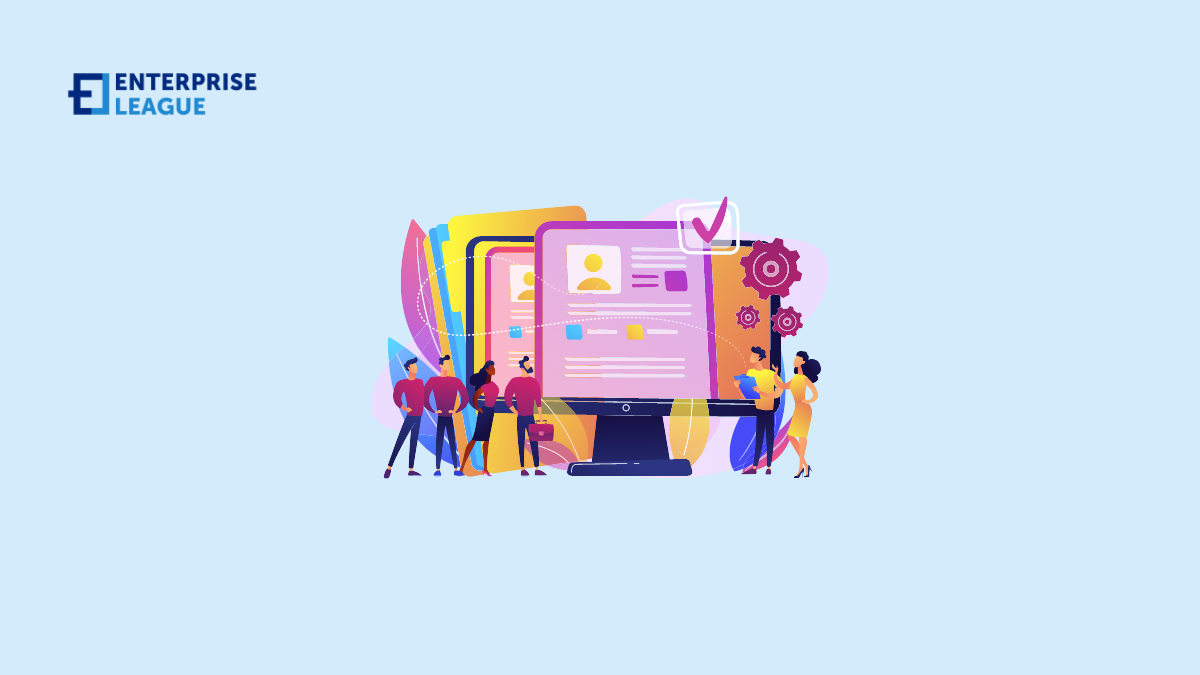Employee engagement plays a vital role in the success of any organization. When employees are engaged and motivated, they are more likely to be productive, committed, and satisfied in their roles. To promote a positive work environment and enhance employee engagement, businesses are turning to HR software solutions.
In this article, we will explore how HR software can significantly contribute to improving employee engagement. We will discuss the key features and benefits of HR software that enable organizations to streamline HR processes, enhance communication, and create a more engaging workplace culture.
How HR software can increase employee engagement
HR software has the potential to greatly enhance employee engagement within an organization. Here are some key ways in which HR software can increase employee engagement.
Streamlined employee onboarding and training
Streamlined employee onboarding and training is a crucial aspect of HR software. With its automation capabilities, HR software simplifies and streamlines the onboarding process, ensuring that new employees have a positive and organized experience from the moment they join the organization. The software allows HR departments to create structured onboarding workflows, providing new hires with essential information, documents, and tasks in a centralized and accessible platform. This eliminates the need for manual paperwork and reduces administrative burdens.
Furthermore, HR software enables the creation and tracking of personalized training plans for each employee. By identifying specific skill gaps and development needs, HR professionals can design customized training programs tailored to individual employees’ requirements. The software also facilitates the delivery of training materials, resources, and online courses, making it easier for employees to acquire the necessary skills and knowledge efficiently.
By streamlining employee onboarding and training through HR software, organizations can ensure that new employees feel welcomed, supported, and equipped with the tools they need to succeed in their roles. This efficient onboarding process sets the foundation for employee engagement, productivity, and long-term success within the organization.
Performance management and feedback
Performance management and feedback are critical components of employee engagement, and HR software plays a significant role in facilitating these processes. With HR software, managers can easily set goals and objectives for their team members, track their progress, and provide regular feedback throughout the performance cycle. This structured approach ensures that employees have a clear understanding of their responsibilities and expectations, promoting a sense of direction and purpose in their work.
Regular performance reviews facilitated by HR software allow for constructive conversations between managers and employees. These reviews provide an opportunity to discuss achievements, challenges, and areas for improvement. Through ongoing communication and feedback, employees receive guidance and support, helping them grow professionally and reach their full potential. This feedback loop enhances transparency, nurtures a culture of continuous improvement, and reinforces the connection between individual contributions and organizational goals.
Peer-to-peer recognition tools enable employees to receive feedback from various stakeholders and foster a culture of collaboration and appreciation.
HR software also offers features like 360-degree feedback and peer-to-peer recognition, enabling employees to receive feedback from various stakeholders and fostering a culture of collaboration and appreciation. Recognizing and acknowledging employees’ accomplishments and efforts contributes to their motivation, job satisfaction, and overall engagement.
By leveraging HR software for performance management and feedback, organizations can establish a structured framework that promotes employee growth, development, and accountability. Regular feedback and performance reviews not only enhance individual performance but also contribute to a positive work environment and stronger employee engagement.
Employee self-service
Employee self-service is a valuable feature offered by HR software that empowers employees and enhances their engagement. Through self-service portals, employees have convenient access to important information and can manage various aspects of their employment. They can update their details, review their benefits package, submit time-off requests, and access their performance records, all in a centralized and user-friendly platform.
By providing employees with self-service capabilities, HR software promotes transparency within the organization. Employees have visibility into their own data and can review and update their information as needed, ensuring accuracy and reducing administrative burdens for HR departments. This transparency fosters trust and open communication between employees and the organization.
Moreover, employee self-service portals promote autonomy and a sense of ownership over their own work life. Employees can take control of their personal information, benefits, and leave management, which enhances their overall experience and reduces dependency on HR personnel for routine administrative tasks. This autonomy instills a sense of empowerment and allows employees to focus on their core responsibilities and professional growth.
Additionally, employee self-service features in HR software contribute to improved efficiency and productivity. Employees can access the information they need quickly and conveniently, without having to rely on manual processes or wait for HR assistance. This streamlined access to information and services helps employees make informed decisions and take timely action, ultimately driving engagement and productivity.
By offering employees self-service capabilities through HR software, organizations foster a culture of transparency, autonomy, and ownership. This accessibility empowers employees, promotes engagement, and allows HR teams to focus on strategic initiatives that drive the organization forward.
Collaboration and communication tools
Collaboration and communication tools are integral components of HR software, enabling organizations to create a collaborative work environment and enhance employee engagement. These tools provide a digital platform for employees to connect, communicate, and collaborate effectively.
Instant messaging features within HR software allow employees to have real-time conversations, facilitating quick and efficient communication. Whether it’s a quick question or a project update, employees can easily reach out to their colleagues or teams, breaking down communication barriers and promoting seamless collaboration.
Team calendars integrated into HR software help employees stay organized and informed about upcoming events, deadlines, and meetings. By having a shared calendar accessible to all team members, employees can coordinate their schedules and plan collaboratively, fostering teamwork and reducing scheduling conflicts.
Document sharing capabilities within HR software enable employees to collaborate on projects, share files, and work on documents simultaneously. This eliminates the need for multiple versions of files and encourages collaboration across teams, departments, and even remote locations. Employees can access and contribute to shared documents, fostering knowledge-sharing, innovation, and a sense of collective ownership.
By providing these collaboration and communication tools, HR software promotes cross-functional collaboration, encourages knowledge-sharing, and strengthens the sense of belonging among employees.
When employees can easily connect and work together, it cultivates a positive work culture, enhances teamwork, and ultimately boosts employee engagement. These tools facilitate effective communication, streamline workflows, and create a collaborative environment that empowers employees to contribute their best efforts and achieve shared goals.
Benefits of using HR software for employee engagement
- Increased efficiency and productivity. By automating manual HR processes, HR software saves time and reduces administrative burdens. This allows HR teams to focus on strategic initiatives that improve employee engagement. Moreover, streamlined processes and improved communication lead to enhanced productivity across the organization.
- Enhanced employee experience. HR software creates a positive employee experience by centralizing information, simplifying workflows, and offering self-service capabilities. This user-friendly approach empowers employees, reduces frustration, and fosters a sense of satisfaction, ultimately driving engagement.
- Data-driven insights. HR software, enhanced with job posting data, generates valuable insights into market trends, enabling companies to align employee engagement frameworks with the current demand in skills and performance expectations. These insights enable organizations to identify trends, measure progress, and make informed decisions to optimize their engagement strategies continuously.
Roadmap to HR software implementation
Implementing HR software requires careful planning and execution to ensure a smooth transition and maximize its benefits. Here is a roadmap to guide you through the process.
- Assess organizational needs. The first step in implementing HR software for employee engagement is to assess the specific needs and challenges within your organization. Conduct a thorough analysis of your current HR processes, employee feedback, and engagement levels. Identify areas that require improvement, such as onboarding, performance management, communication, or data tracking. This assessment will help you determine the key features and functionalities needed in an HR software solution to address these needs effectively.
- Choose the right HR software. Once you have identified your organization’s requirements, conduct research to find an HR software solution that aligns with your goals. Look for a software provider that offers a comprehensive suite of features to support employee engagement, such as onboarding tools, performance management modules, employee self-service portals, communication and collaboration features, and robust reporting and analytics capabilities. Consider factors like user-friendly interfaces, scalability, integration options with existing systems, and the ability to customize the software to meet your specific needs.
- Plan and execute implementation. Develop a detailed implementation plan to ensure a smooth transition to the new HR software. Start by setting clear objectives and defining the scope of the implementation project. Assign responsibilities to a dedicated implementation team, which may consist of HR professionals, IT specialists, and key stakeholders. Establish a timeline and allocate resources accordingly.
- System setup and configuration. Work closely with the HR software provider or implementation team to set up the system according to your organization’s requirements. This includes configuring modules, workflows, permissions, and data structures. Integrate the software with existing HR systems, such as payroll or time-tracking systems, to ensure seamless data flow.
- Data migration. Migrate relevant employee data, such as personal information, employment history, and performance records, from the existing HR system to the new HR software. Ensure data accuracy and integrity throughout the migration process. Conduct thorough testing to verify the data’s correctness and completeness.
- User training. Provide comprehensive training to HR personnel, managers, and employees on how to effectively use the HR software. Offer both initial training sessions and ongoing support to address any questions or challenges that arise. Emphasize the benefits of the software and how it will enhance employee engagement.
- Change management. Implementing new HR software may require changes in processes and workflows. Communicate the benefits of the software to all stakeholders and ensure their buy-in. Address any concerns or resistance to change by providing clear explanations, addressing doubts, and involving employees in the decision-making process where appropriate.
- Monitor and adapt. Once the HR software is implemented, monitor its effectiveness in improving employee engagement. Collect feedback from employees and managers on their experience with the software. Analyze key metrics and analytics provided by the software to measure the impact on engagement levels, productivity, and other relevant factors. Use this data to identify areas for improvement and make necessary adjustments to optimize the software’s effectiveness.
Continuously engage with employees and managers to gather feedback and suggestions for further enhancements. Regularly review and update your HR software implementation plan to ensure it remains aligned with your organization’s evolving needs and goals. Stay informed about updates and new features released by the software provider and leverage them to further improve employee engagement.
By following these implementation steps and continuously refining your approach, you can maximize the benefits of HR software for employee engagement and create a more productive and engaged workforce.
Conclusion
HR software offers a range of features and benefits that can significantly improve employee engagement. By streamlining processes, facilitating communication, and empowering employees, HR software enhances efficiency, productivity, and the overall employee experience.
When implementing HR software, organizations must carefully assess their needs, choose the right solution, plan the implementation process, and continually monitor and adapt. With the right approach, HR software becomes a powerful tool to create a thriving and engaged workforce, driving organizational success.
More must-read stories from Enterprise League:
- Find out how having age diversity in the workplace can improve your business.
- Learn about how micromanaging can hurt your productivity.
- Creative and profitable outdoor business ideas you should be aware of.
- How to ask for a deposit in a contract without being awkward or losing a client.
Related Articles
Excavator Injuries: How Workers’ Comp Impacts Small Construction Firms
Excavators are essential on construction sites, especially for digging, grading, lifting, and demolition work. But the same power that makes them indispensable also makes them dangerous. When an excavator strikes a worker, rolls over, or malfunctions, the injuries are...
The ROI of 3D Visualization in Real Estate Marketing
Real estate marketing has fundamentally changed over the past five years. The industry that once relied on printed brochures, static photographs, and open house tours now operates in an increasingly digital environment where visual presentation directly impacts sales...
How To Choose the Right Tool for Waterfall Chart Reporting
Clear waterfall charts help teams explain how results change over time. This guide compares Excel, Google Sheets, and Power BI, then looks at add-ins such as Zebra BI and think-cell for advanced financial reporting. You will see where each option fits, from quick...
Excavator Injuries: How Workers’ Comp Impacts Small Construction Firms
Excavators are essential on construction sites, especially for digging, grading, lifting, and demolition work. But the same power that makes them indispensable also makes them dangerous. When an excavator strikes a worker, rolls over, or malfunctions, the injuries are...
The ROI of 3D Visualization in Real Estate Marketing
Real estate marketing has fundamentally changed over the past five years. The industry that once relied on printed brochures, static photographs, and open house tours now operates in an increasingly digital environment where visual presentation directly impacts sales...






